Dissecting 5G Network Performance
During the past 4 years, we have been conducting extensive field measurement studies to characterize the performance of today’s 5G deployments, uncover cellular operator policies, and understand their limitations and their potential to support a new set of bandwidth-intensive, latency-critical 5G “killer apps” – augmented reality (AR), virtual reality (VR), connected autonomous vehicles (CAVs), 360º/volumetric video streaming, and cloud gaming. We have conducted multiple cross-country road trips and additional measurement campaigns in Alaska, Hawaii, and more than a dozen US cities. All our datasets (several TB of data) are publicly available.
Research Papers and Datasets
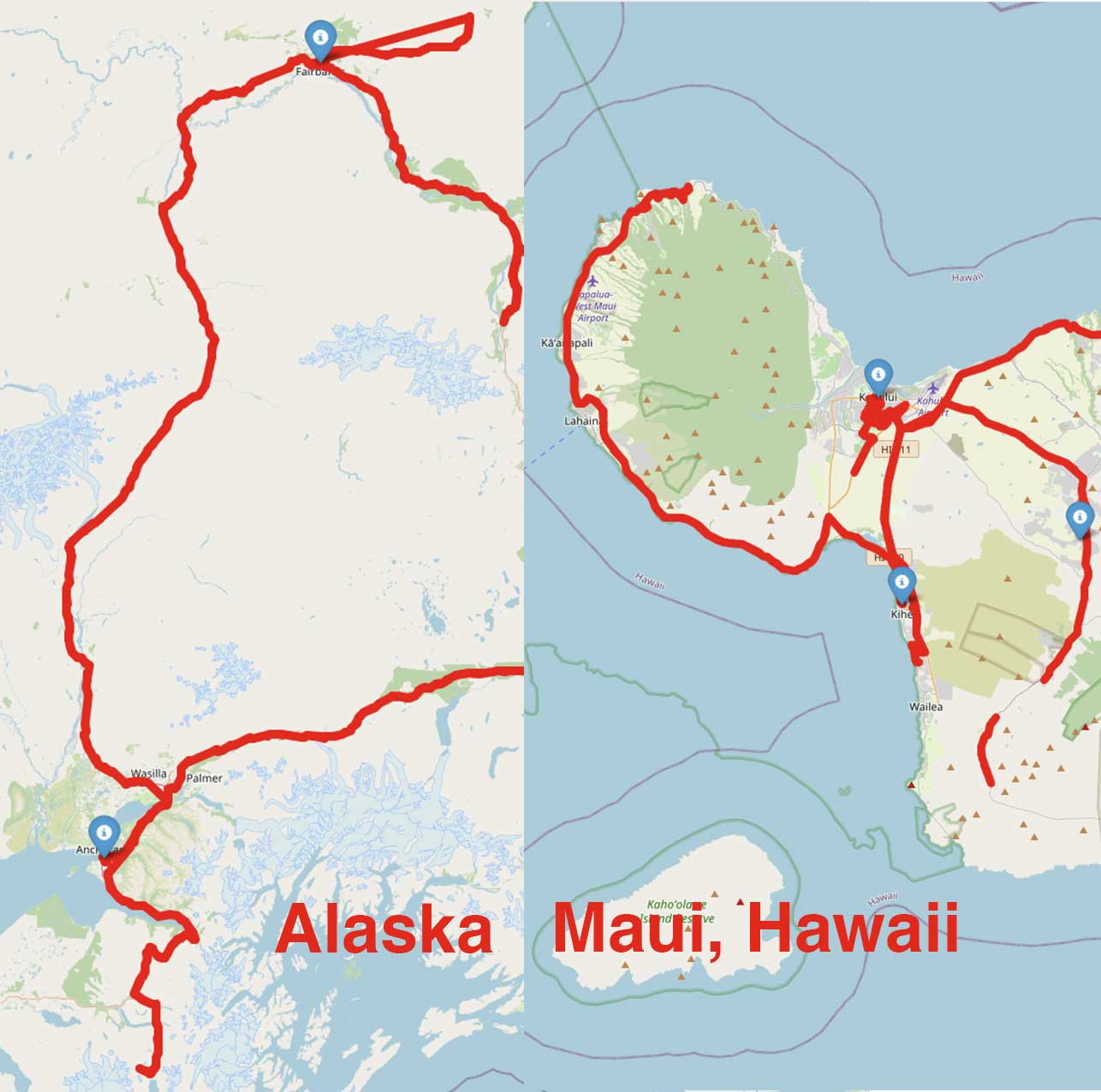
Exploring the 5G Digital Divide in the Non-Contiguous US:
LEO Satellites to the Rescue? (ACM SIGMETRICS 2026)
This study presents the first detailed evaluation of cellular and Starlink network coverage and performance in non-contiguous US regions (Alaska and Maui, HI). Our study shows a persistent digital divide between mainland and non-contiguous US for cellular networks in terms of both coverage and performance. Starlink, on the other hand, provides substantially higher performance than cellular networks most of the time, but area-specific challenges, including unique terrains in Hawaii and sparse satellite deployment in Alaska, significantly degrade performance compared to the mainland US.
Dataset Coming Soon
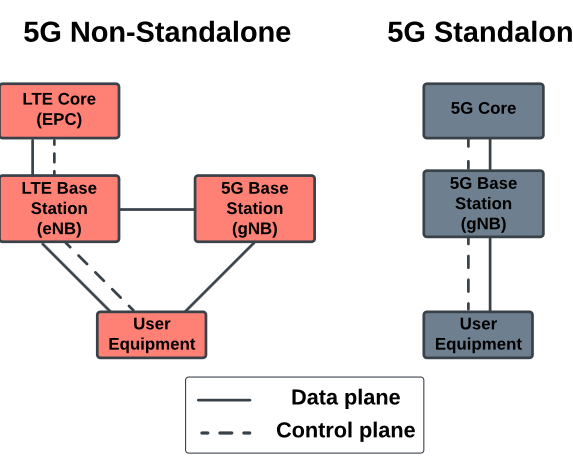
A First Large-Scale Study of Operational 5G
Standalone Networks (ACM CoNext 2025)
This study provides the first large-scale U.S. evaluation of 5G Standalone (SA)
from two cross-country drive tests (3200+ km; 2023–2024), directly comparing SA
and NSA. We find a clear shift toward SA—broader rollout and advanced features
(higher-order CA, new bands/duplexing) deliver superior performance over NSA’s
plateau—and we quantify handover durations and uplink power control across both
modes.
Dataset
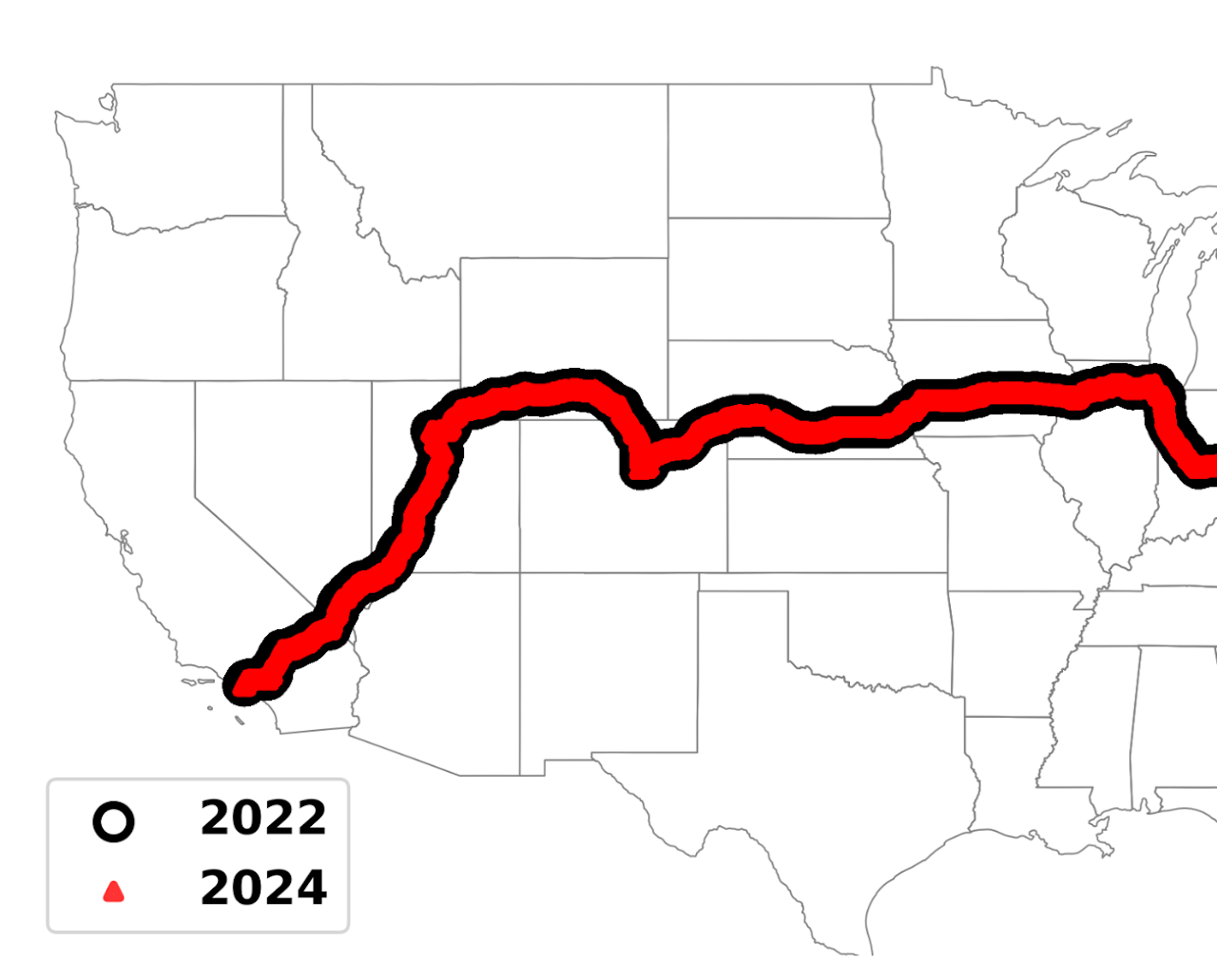
Replication: Performance of Cellular Network on the
Wheels (ACM IMC 2025)
This study replicates our ACM IMC 2023 work, comparing U.S. cellular coverage and
performance from 2022 to 2024 along the same route. While coverage and
performance have improved, two of the three major operators still deliver under
50% 5G coverage along the route. We perform an additional analysis comparing
cellular networks with Starlink’s LEO satellite service.
Dataset
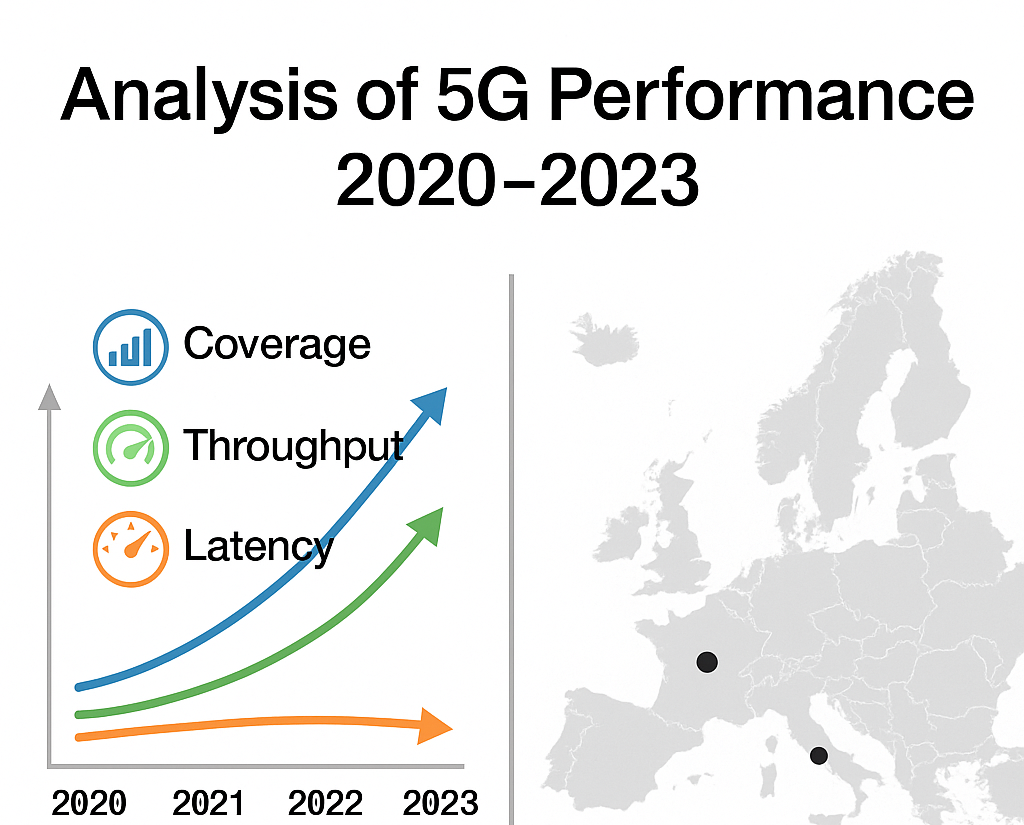
5G Metamorphosis: A Longitudinal Study of 5G
Performance from the Beginning (ACM IMC 2025)
This study conducts the first longitudinal ‘metamorphosis’ analysis of 5G, using
2.65M+ Ookla Speedtest measurements across nine U.S. and European cities from
2020–2023. We reveal the evolution of 5G coverage, throughput, and latency at
quarterly granularity, compare cross-city performance diversity, and uncover
factors influencing user experience, including device adoption and network load.
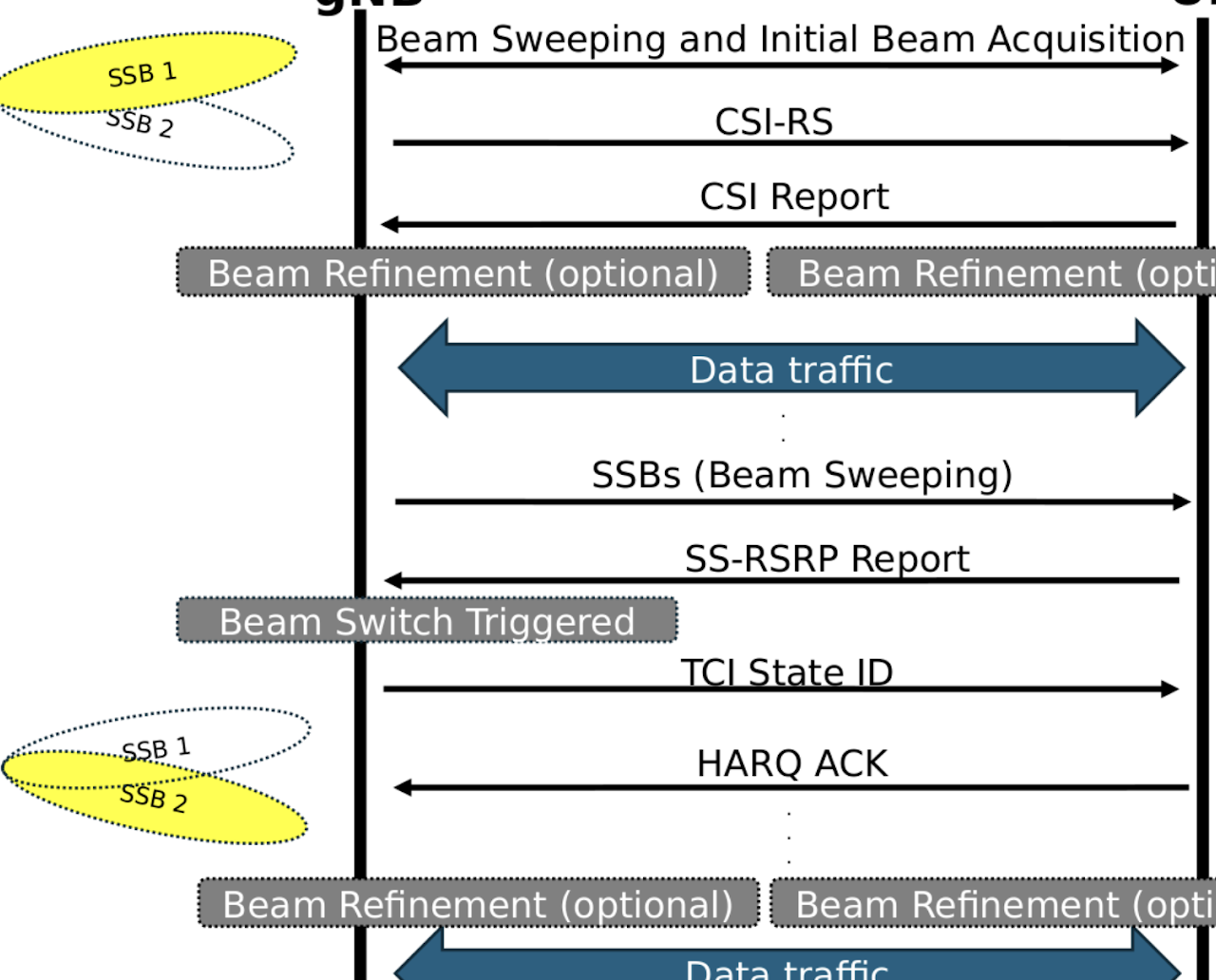
Vivisecting
Beam
Management in Operational 5G mmWave Networks (ACM CoNEXT 2025)
This study presents the first in-depth empirical analysis of beam management in
commercial 5G mmWave networks across two major U.S. operators and six cities. We
evaluate key parameters, mobility scenarios, and interactions with rate
adaptation
and carrier aggregation, revealing the overhead and effectiveness of real-world
beam
tracking.
Dataset
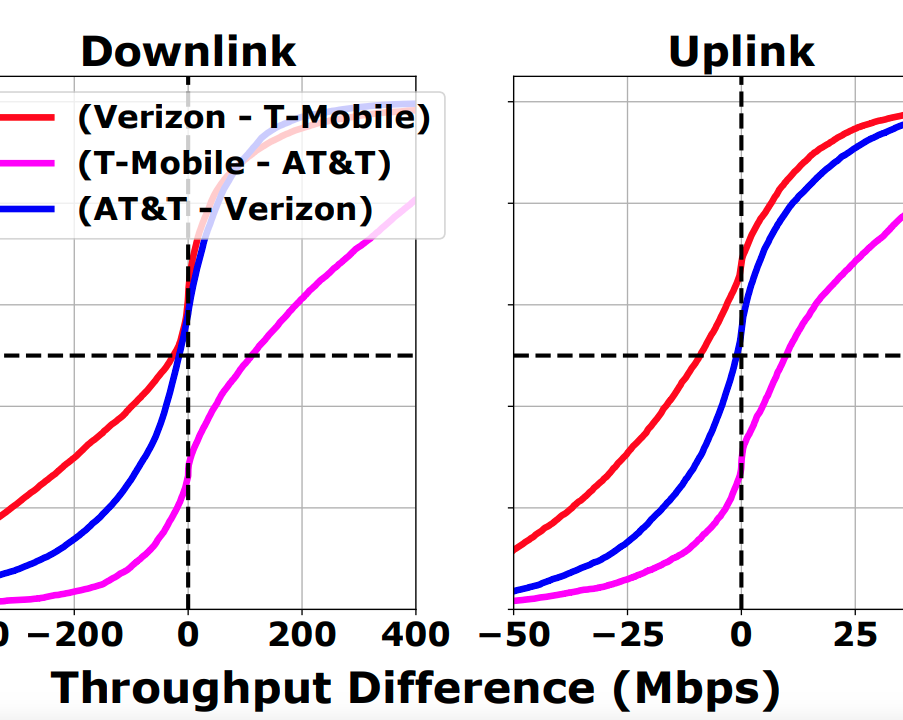
A Large-Scale Study of the Potential of Multi-Carrier Access
in
the 5G Era (PAM 2025)
This study explores the potential of multi-carrier access in cellular networks
through an 8,000+ km cross-country measurement campaign across all three major
U.S.
operators. We find substantial performance diversity across operators at a given
location and time. Trace-driven analysis show that link selection and
aggregation
techniques offer significant gains over single-operator performance.
Dataset
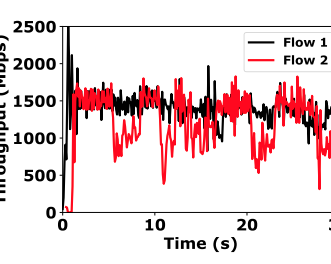
Demystifying Resource Allocation Policies in Operational 5G
mmWave Networks (ACM-IEEE ToN (2025)/IEEE WowMoM 2022)
This study presents the first systematic analysis of resource allocation policies
in
commercial 5G mmWave networks, based on measurements across four U.S. cities and
two
major operators. We find that operators employ simple threshold-based policies
and
often over-allocate resources to new flows with low traffic demands or reserve
some
capacity for future usage. These policies vary not only among operators but also
for
a single operator in different cities.
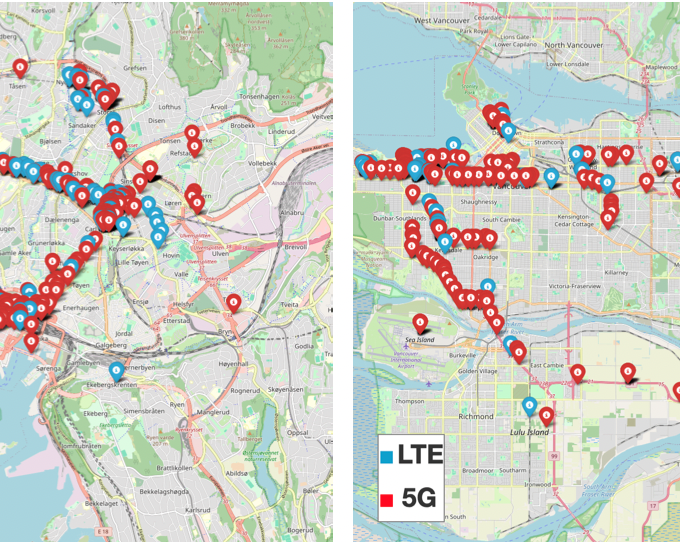
How Mature is 5G Deployment? A Cross-Sectional, Year-Long
Study
of 5G Uplink Performance (IFIP Networking 2024/Elsevier COMCOM (2025))
This study assesses 5G deployment maturity through a one year-long uplink
measurement
campaigns: a crowd-sourced study across eight cities in Europe and North
America,
and a controlled mmWave study in Boston. Our datasets show that 5G deployment in
major cities appears to have matured, with no major performance improvements
observed over a one-year period, but 5G does not provide consistent, superior
measurable performance over LTE, especially in terms of latency, and further
there
exists clear uneven 5G performance across the 8 cities.
Dataset
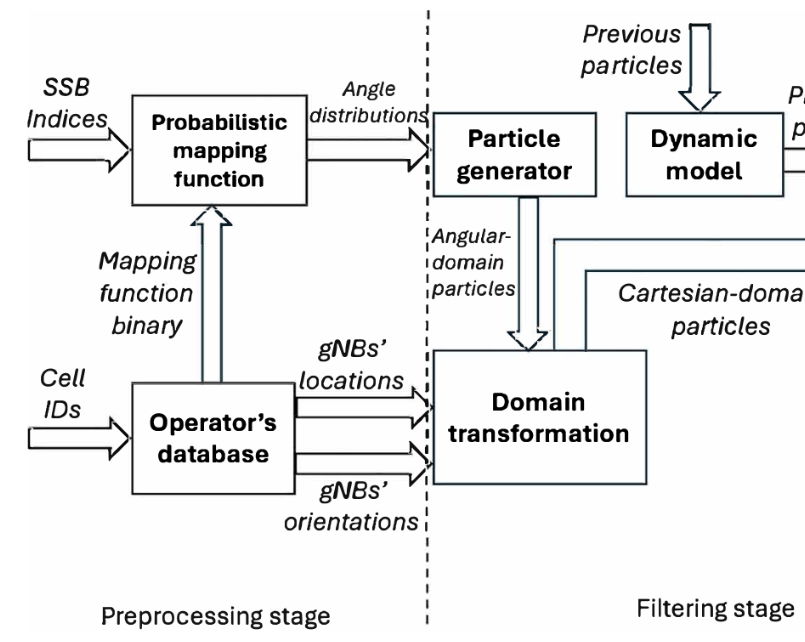
mm-NOLOC: mmWave-based Localization for Mobile Networks
without
3GPP Location Service (ACM MobiHOC 2025)
This work introduces a UE-centric localization system that leverages 5G mmWave
infrastructure to provide accurate positioning in dense urban areas without
relying
on 3GPP location support. By using only UE-side control-plane information (SSB
indices mapped to beam directions) and particle filtering, our system via
real-world
experiments show sub-3 m median accuracy and under 10 m at the 95th percentile.
Dataset
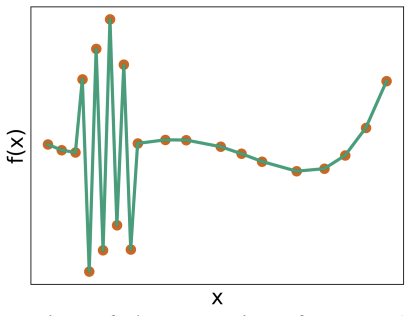
On the Predictability of Fine-grained Cellular Network Throughput using Machine Learning Models (IEEE MASS 2024)
This work conducts the first feasibility study of predicting fine-grained application throughput in real-world cellular networks with mixed LTE/5G technologies. Our analysis shows that popular ML models previously claimed to predict well for various wireless networks scenarios (e.g., WiFi or single technology network such as LTE only) do not predict well under app-centric metrics such as ARE95 and PARE10. Further, we uncover the root cause for the poor prediction accuracy of ML models as the inherent conflicting sample sequences in the fine-grained cellular network throughput data.
Dataset

Performance
of Cellular Network on the Wheels (ACM IMC 2023)
This is the first study that presents a cross-continental 5G measurement campaign
(LA
to Boston, 5700+ km) evaluating coverage, network performance, and user
experience
of latency-sensitive applications under real driving conditions. Our findings
revealed fragmented 5G coverage and poor application performance even after 4
years
of 5G rollout.
Dataset
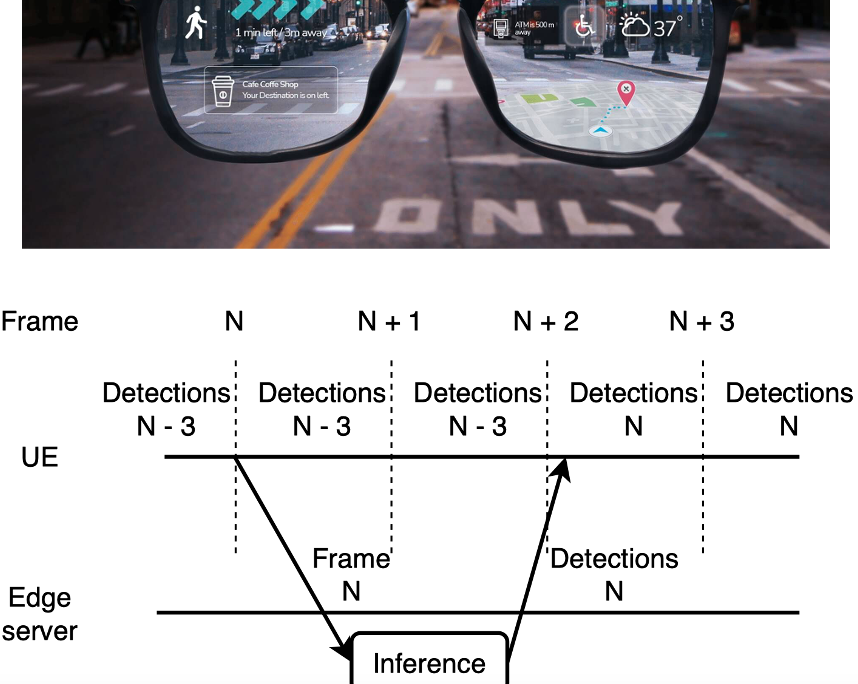
Can 5G mmWave Enable Edge-Assisted Real-Time Object
Detection
for Augmented Reality? (IEEE MASCOTS 2023)
This study evaluates the feasibility of using 5G mmWave with edge cloud to
support
latency-critical AR via edge-assisted object detection. We find that current 5G
mmWave uplink performance is insufficient to meet AR requirements, with only
marginal gains over LTE, while app-level optimizations and edge hardware
upgrades
offer performance improvements but still fall short of enabling robust AR.
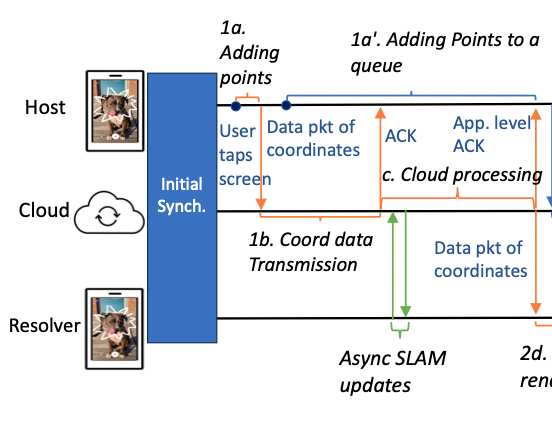
The
Power
of Asynchronous SLAM in Multi-User AR over Cellular Networks: A Measurement
Study (ACM SIGCOMM EMS 2023 Workshop)
This study revisits the feasibility of multi-user AR over LTE and 5G by analyzing
the
Just a Line app, which achieves end-to-end latencies of a few hundred
milliseconds—sufficient for real-time interactions. We show that performance
differences across popular AR apps stem from their architectural choices for
SLAM,
with asynchronous vs. synchronous updates leading to drastically different user
experiences.
Dataset
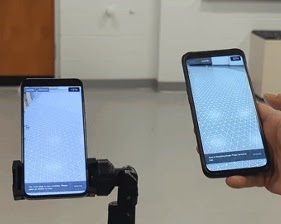
Can 5G mmWave Support Multi-user AR? (PAM 2022)
This study examines whether 5G mmWave can support multi-user AR by conducting an in-depth measurement of a popular AR app over both LTE and 5G mmWave. We find that while 5G mmWave reduces uplink visual data transmission latency, the overall end-to-end latency remains too high for practical interaction, as non-network components dominate. Moreover, the app consumes 66% more network energy and 28% more total energy on 5G mmWave compared to LTE, offering no real benefit for multi-user AR.
Dataset
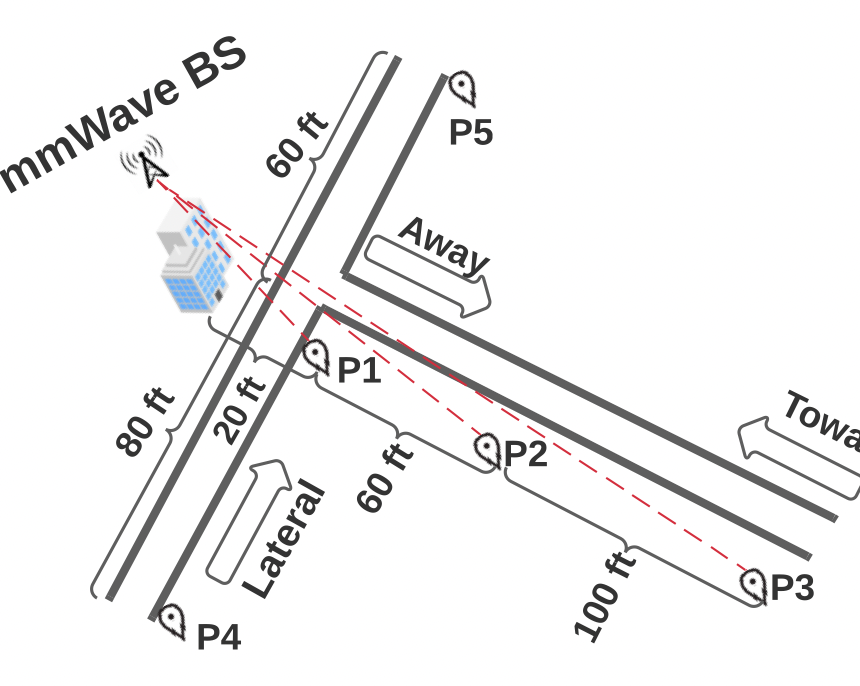
An
in-depth
study of uplink performance of 5G mmWave networks (ACM SIGCOMM 5G-MeMU 2022
Workshop)
This study presents a systematic analysis of uplink performance in commercial 5G mmWave networks across three U.S. cities and two operators. We show that while 5G mmWave offers substantially higher bandwidth and lower latency than LTE, its performance is geographically inconsistent, erratic, and often suboptimal for latency-critical applications. Our control- and PHY-level analysis reveals fundamental challenges, highlighting the need for design and deployment optimizations to realize 5G mmWave’s full potential.
Dataset

Exploring the 5G Digital Divide in the Non-Contiguous US: LEO Satellites to the Rescue? (ACM SIGMETRICS 2026)
This study presents the first detailed evaluation of cellular and Starlink network coverage and performance in non-contiguous US regions (Alaska and Maui, HI). Our study shows a persistent digital divide between mainland and non-contiguous US for cellular networks in terms of both coverage and performance. Starlink, on the other hand, provides substantially higher performance than cellular networks most of the time, but area-specific challenges, including unique terrains in Hawaii and sparse satellite deployment in Alaska, significantly degrade performance compared to the mainland US.
Dataset Coming Soon
A First Large-Scale Study of Operational 5G Standalone Networks (ACM CoNext 2025)
This study provides the first large-scale U.S. evaluation of 5G Standalone (SA) from two cross-country drive tests (3200+ km; 2023–2024), directly comparing SA and NSA. We find a clear shift toward SA—broader rollout and advanced features (higher-order CA, new bands/duplexing) deliver superior performance over NSA’s plateau—and we quantify handover durations and uplink power control across both modes.
Dataset
Replication: Performance of Cellular Network on the Wheels (ACM IMC 2025)
This study replicates our ACM IMC 2023 work, comparing U.S. cellular coverage and performance from 2022 to 2024 along the same route. While coverage and performance have improved, two of the three major operators still deliver under 50% 5G coverage along the route. We perform an additional analysis comparing cellular networks with Starlink’s LEO satellite service.
Dataset
5G Metamorphosis: A Longitudinal Study of 5G Performance from the Beginning (ACM IMC 2025)
This study conducts the first longitudinal ‘metamorphosis’ analysis of 5G, using 2.65M+ Ookla Speedtest measurements across nine U.S. and European cities from 2020–2023. We reveal the evolution of 5G coverage, throughput, and latency at quarterly granularity, compare cross-city performance diversity, and uncover factors influencing user experience, including device adoption and network load.

Vivisecting Beam Management in Operational 5G mmWave Networks (ACM CoNEXT 2025)
This study presents the first in-depth empirical analysis of beam management in commercial 5G mmWave networks across two major U.S. operators and six cities. We evaluate key parameters, mobility scenarios, and interactions with rate adaptation and carrier aggregation, revealing the overhead and effectiveness of real-world beam tracking.
Dataset
A Large-Scale Study of the Potential of Multi-Carrier Access in the 5G Era (PAM 2025)
This study explores the potential of multi-carrier access in cellular networks through an 8,000+ km cross-country measurement campaign across all three major U.S. operators. We find substantial performance diversity across operators at a given location and time. Trace-driven analysis show that link selection and aggregation techniques offer significant gains over single-operator performance.
Dataset
Demystifying Resource Allocation Policies in Operational 5G mmWave Networks (ACM-IEEE ToN (2025)/IEEE WowMoM 2022)
This study presents the first systematic analysis of resource allocation policies in commercial 5G mmWave networks, based on measurements across four U.S. cities and two major operators. We find that operators employ simple threshold-based policies and often over-allocate resources to new flows with low traffic demands or reserve some capacity for future usage. These policies vary not only among operators but also for a single operator in different cities.

How Mature is 5G Deployment? A Cross-Sectional, Year-Long Study of 5G Uplink Performance (IFIP Networking 2024/Elsevier COMCOM (2025))
This study assesses 5G deployment maturity through a one year-long uplink measurement campaigns: a crowd-sourced study across eight cities in Europe and North America, and a controlled mmWave study in Boston. Our datasets show that 5G deployment in major cities appears to have matured, with no major performance improvements observed over a one-year period, but 5G does not provide consistent, superior measurable performance over LTE, especially in terms of latency, and further there exists clear uneven 5G performance across the 8 cities.
Dataset
mm-NOLOC: mmWave-based Localization for Mobile Networks without 3GPP Location Service (ACM MobiHOC 2025)
This work introduces a UE-centric localization system that leverages 5G mmWave infrastructure to provide accurate positioning in dense urban areas without relying on 3GPP location support. By using only UE-side control-plane information (SSB indices mapped to beam directions) and particle filtering, our system via real-world experiments show sub-3 m median accuracy and under 10 m at the 95th percentile.
Dataset
On the Predictability of Fine-grained Cellular Network Throughput using Machine Learning Models (IEEE MASS 2024)
This work conducts the first feasibility study of predicting fine-grained application throughput in real-world cellular networks with mixed LTE/5G technologies. Our analysis shows that popular ML models previously claimed to predict well for various wireless networks scenarios (e.g., WiFi or single technology network such as LTE only) do not predict well under app-centric metrics such as ARE95 and PARE10. Further, we uncover the root cause for the poor prediction accuracy of ML models as the inherent conflicting sample sequences in the fine-grained cellular network throughput data.
Dataset
Performance of Cellular Network on the Wheels (ACM IMC 2023)
This is the first study that presents a cross-continental 5G measurement campaign (LA to Boston, 5700+ km) evaluating coverage, network performance, and user experience of latency-sensitive applications under real driving conditions. Our findings revealed fragmented 5G coverage and poor application performance even after 4 years of 5G rollout.
Dataset
Can 5G mmWave Enable Edge-Assisted Real-Time Object Detection for Augmented Reality? (IEEE MASCOTS 2023)
This study evaluates the feasibility of using 5G mmWave with edge cloud to support latency-critical AR via edge-assisted object detection. We find that current 5G mmWave uplink performance is insufficient to meet AR requirements, with only marginal gains over LTE, while app-level optimizations and edge hardware upgrades offer performance improvements but still fall short of enabling robust AR.

The Power of Asynchronous SLAM in Multi-User AR over Cellular Networks: A Measurement Study (ACM SIGCOMM EMS 2023 Workshop)
This study revisits the feasibility of multi-user AR over LTE and 5G by analyzing the Just a Line app, which achieves end-to-end latencies of a few hundred milliseconds—sufficient for real-time interactions. We show that performance differences across popular AR apps stem from their architectural choices for SLAM, with asynchronous vs. synchronous updates leading to drastically different user experiences.
Dataset
Can 5G mmWave Support Multi-user AR? (PAM 2022)
This study examines whether 5G mmWave can support multi-user AR by conducting an in-depth measurement of a popular AR app over both LTE and 5G mmWave. We find that while 5G mmWave reduces uplink visual data transmission latency, the overall end-to-end latency remains too high for practical interaction, as non-network components dominate. Moreover, the app consumes 66% more network energy and 28% more total energy on 5G mmWave compared to LTE, offering no real benefit for multi-user AR.
Dataset
An in-depth study of uplink performance of 5G mmWave networks (ACM SIGCOMM 5G-MeMU 2022 Workshop)
This study presents a systematic analysis of uplink performance in commercial 5G mmWave networks across three U.S. cities and two operators. We show that while 5G mmWave offers substantially higher bandwidth and lower latency than LTE, its performance is geographically inconsistent, erratic, and often suboptimal for latency-critical applications. Our control- and PHY-level analysis reveals fundamental challenges, highlighting the need for design and deployment optimizations to realize 5G mmWave’s full potential.
Dataset